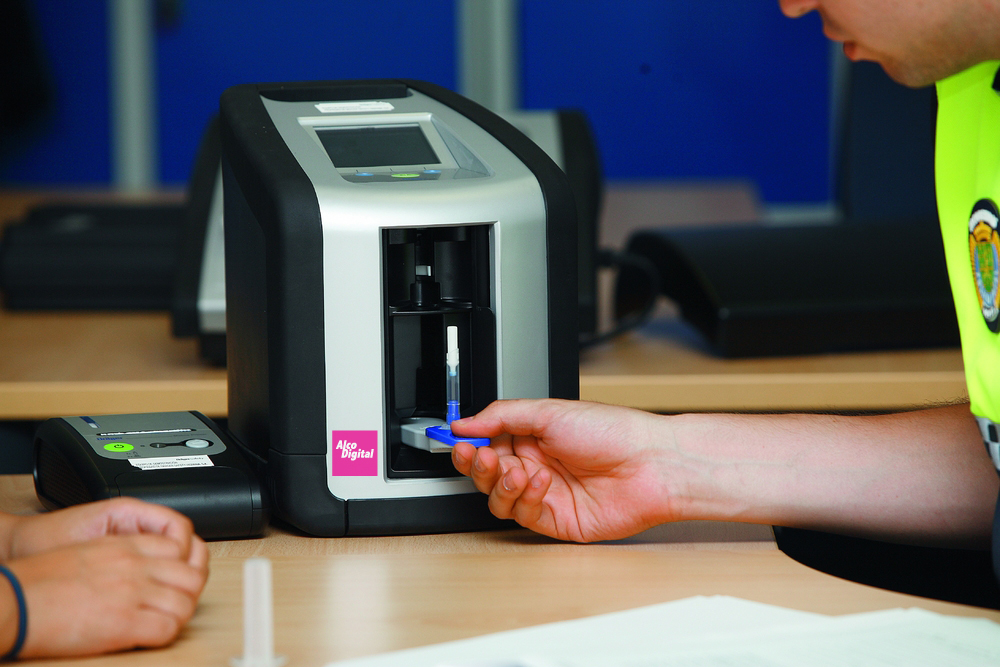
As the party season draws closer, Suzannah Robin, a drug safety expert at AlcoDigital, offers a guide for workplace testing.
A study of more than 1,300 industry workers carried out by the Considerate Constructors Scheme revealed that 35% had noticed their colleagues under the influence of either alcohol or drugs while on the job. Additionally, 65% said they had never undergone a test for drugs or alcohol at work and 39% believed that the issue could be better addressed by their employer.
Anyone operating machinery, handling vehicles or working on site while under the influence of drugs or alcohol could pose a threat to themselves as well as other employees and members of the public.
Alcohol and drugs testing protects staff and ensures that an employer’s duties under the Health and Safety at Work Act are adhered to. However, with numerous options available it is not always immediately apparent which drug testing method will best meet the requirements for companies.
Therefore, having a good understanding of the pros and cons of each process before reaching any conclusions on future test policy should be any company’s first port of call before making a commitment to using a specific test method.
I have worked for more than 15 years helping numerous businesses to implement drug testing policies for their staff through certified training programmes. These include the correct use of safety equipment, accurately interpreting results and spotting the different signs and symptoms of drug misuse.

Many companies may already have an idea of the type of drug test they would like to implement. However, when we start getting into the details of the benefits and restrictions of each version, we soon establish that the first choice is not always the best for their particular requirements.
So, what should employers be looking out for when comparison shopping for drug testing kits?
The first question to ask is: what type of information does the kit provide?
In safety-critical industries, look out for tests which tell you if the subject is currently under the influence of drugs. For this, saliva testing is the most reliable method for drugs testing.
Testing with saliva has the following benefits:
- It confirms if the person being testing is currently under the influence of drugs;
- It is less likely to become contaminated with other substances.
It’s also important to look at the test’s cut-off level for each drug. This determines how much of a drug can be present in the system before it is detected by the test. The lower the cut-off level, the more sensitive the kit.
If the cut-off level for THC (cannabis) is 10ng/ml of saliva, then if there is less than 10ng/ml of saliva the kit won’t detect it. This means that a device that cuts off at 10ng will be more accurate than a device at 50ng. It’s essentially five times as sensitive.
“Aside from taking a blood test, a saliva sample is the only other method of drug testing that will produce a positive result if the individual had taken drugs in the last two hours.”
One of the most popular and widespread methods used for workplace testing is carried out using urine samples. For many years these have been a reliable and cost-effective form of drug testing providing instant results that can be undertaken in-house.
Whilst urine tests are ideal for implementing random testing policies, and can help to prevent incidents from happening in the first place, this form of testing is not without its limitations. Urine tests will not reveal if an individual has consumed drugs in the last two hours. Therefore, in the event any incident did take place a urine sample will not confirm if the employee was impaired by drugs at the time it occurred.
Aside from taking a blood test, a saliva sample is the only other method of drug testing that will produce a positive result if the individual had taken drugs in the last two hours but, more important, unlike urine testing, which detects drugs taken weeks ago, it will not reveal a positive result for any drugs that may have been taken more than 48 hours ago, which makes it the most reliable method for determining the cause of an incident.
This is the reason we recommend that companies with employees operating heavy machinery or driving vehicles adopt this testing method as part of their best practice policy.
Please visit www.alcodigital.co.uk for more information.











